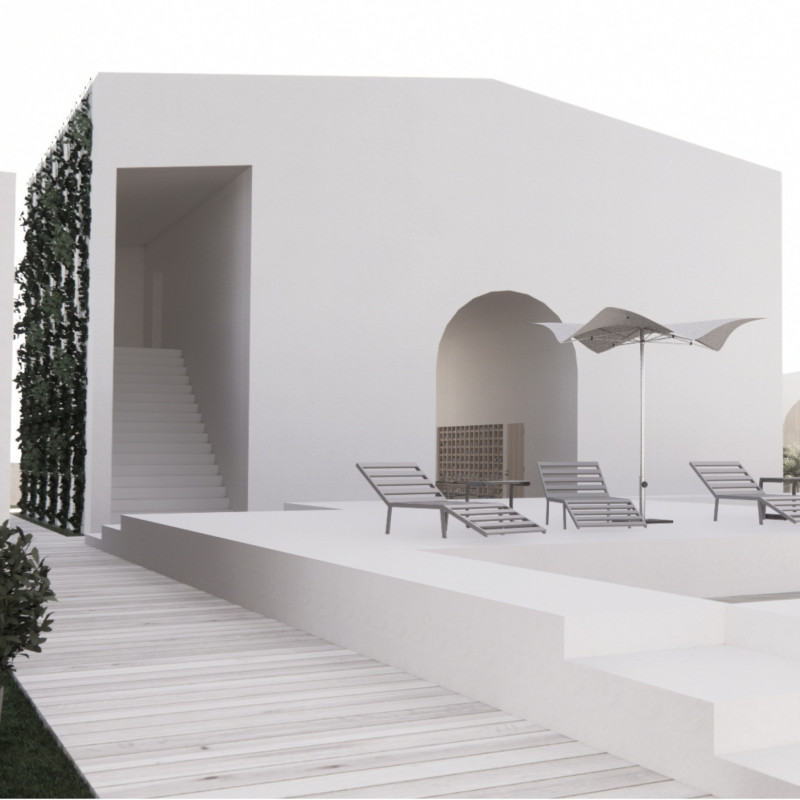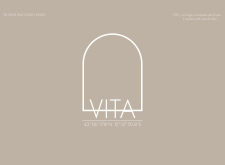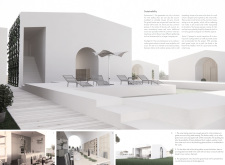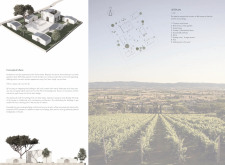5 key facts about this project
The design includes individual guest houses, each intended to provide private, comfortable spaces for visitors. The architecture draws inspiration from local viticultural traditions, evident in the circular forms that mimic wine bottles and the use of earthy, natural materials. The layout thoughtfully considers the land’s topography, enhancing both the aesthetic and functional aspects of the buildings.
Design Integration of Nature and Community
A significant aspect of this project is its focus on community engagement. The communal wine house serves as a central hub, encouraging interaction among guests through shared activities such as wine tasting, cooking, and dining. This space is complemented by large terraces and outdoor gardens that blur the boundaries between indoor and outdoor living. The flexible design allows for various configurations of social activities while maintaining individual privacy in the guest units.
The use of materials such as plaster, wood, and glass contributes to the project’s environmental focus. These materials not only reflect local architectural styles but also ensure durability and minimal maintenance. The vaulting in guest house roofs enhances natural ventilation and light while creating an inviting atmosphere.
Sustainable Practices and Innovative Design
Sustainability is a core principle of the VITA project, featuring systems for rainwater harvesting and energy-efficient design elements. The architecture promotes ecological awareness by aligning with natural water cycles and maximizing the natural resources of the region. The strategic placement of structures allows for preservation of existing landscapes and trees, working with the environment rather than against it.
Unique design approaches include the integration of curved forms, which serve both aesthetic and functional purposes. These shapes enhance airflow within the buildings and create a visually cohesive appearance across the project. The terraces, designed for leisure and interaction, foster an environment where visitors can experience the tranquility of the landscape.
The VITA project is a well-considered architectural endeavor that blends functional design with a respect for the natural environment and local culture. To explore the architectural plans, sections, and designs in detail, readers are encouraged to review the project presentation for an in-depth understanding of the innovative architectural ideas implemented within this design.


























